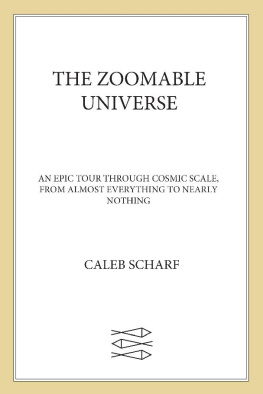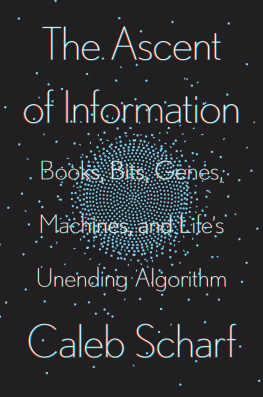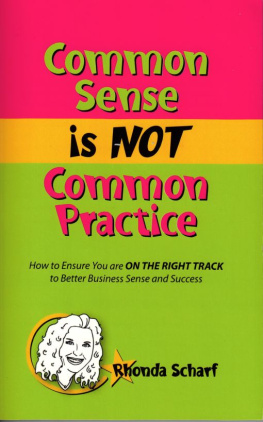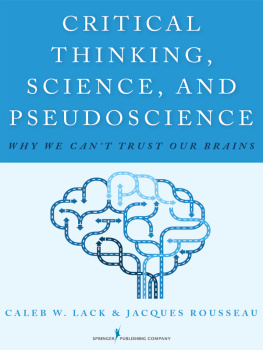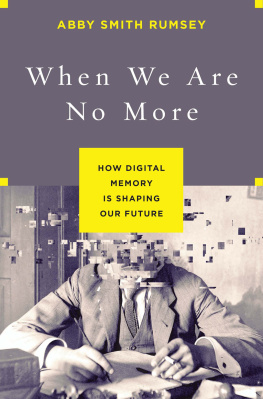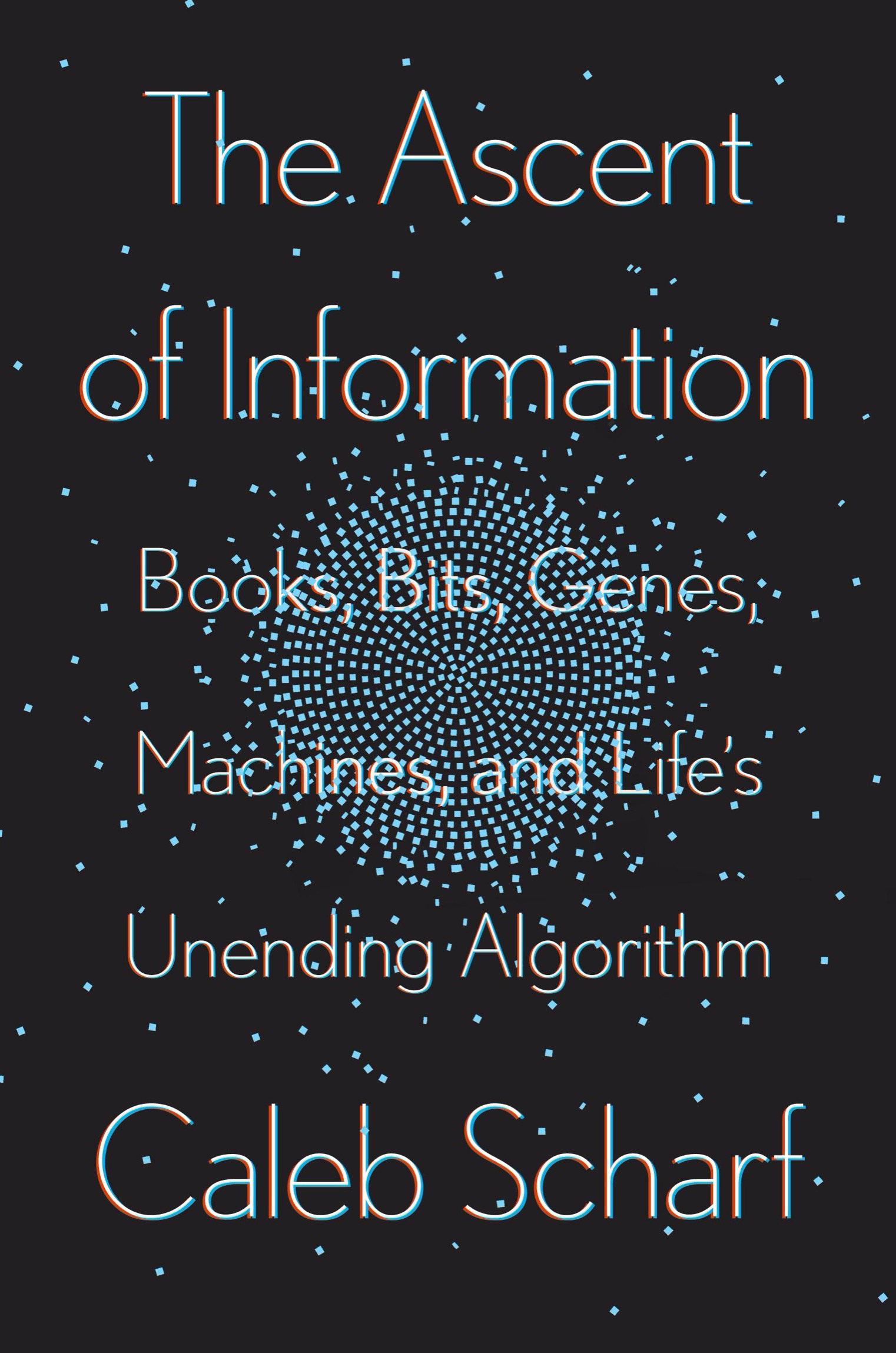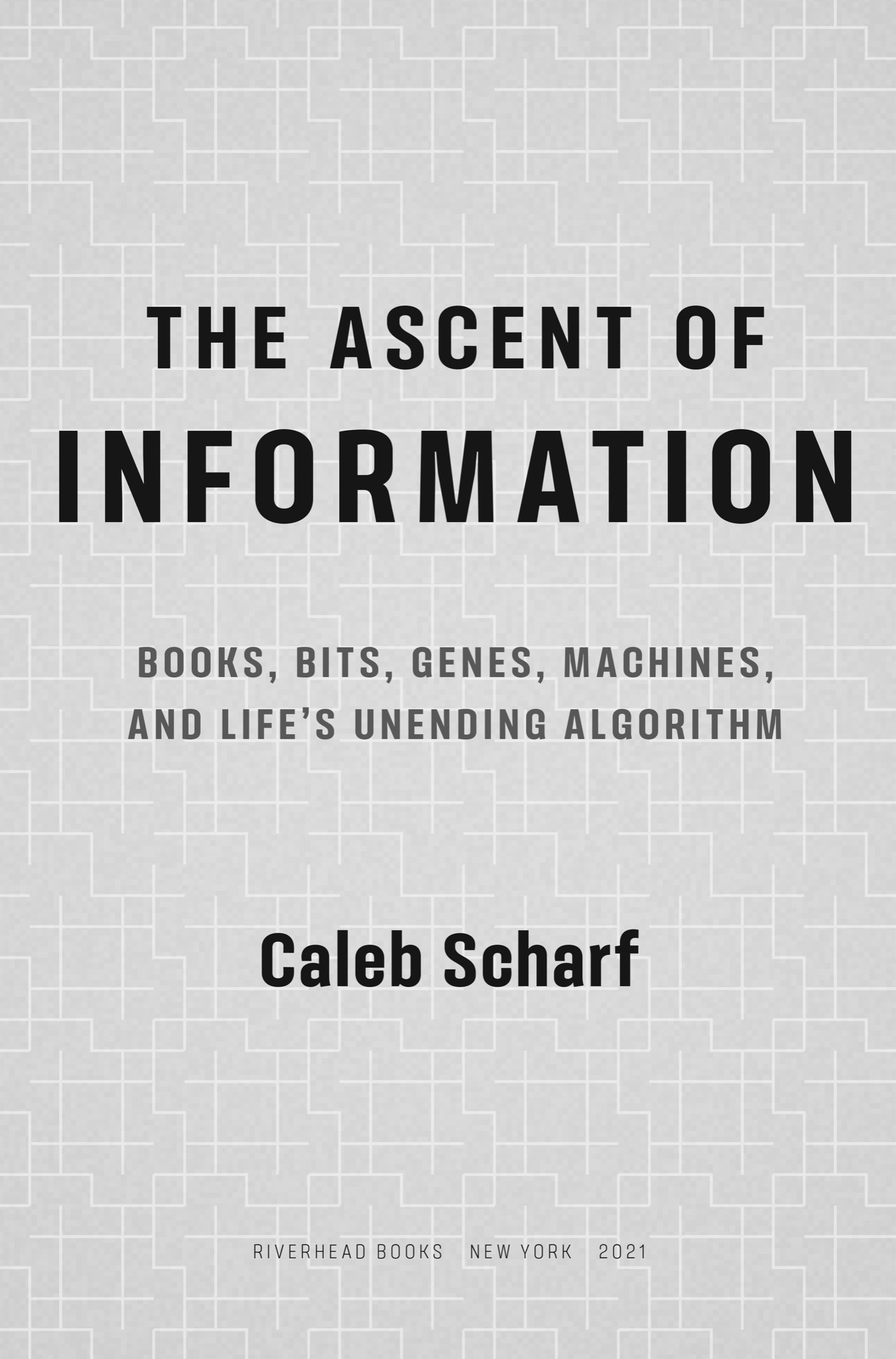Penguin supports copyright. Copyright fuels creativity, encourages diverse voices, promotes free speech, and creates a vibrant culture. Thank you for buying an authorized edition of this book and for complying with copyright laws by not reproducing, scanning, or distributing any part of it in any form without permission. You are supporting writers and allowing Penguin to continue to publish books for every reader.
Riverhead and the R colophon are registered trademarks of Penguin Random House LLC.
Names: Scharf, Caleb A., 1968 author.
Title: The ascent of information: books, bits, genes, machines, and lifes unending algorithm / Caleb Scharf.
Description: New York: Riverhead Books, 2021. | Includes bibliographical references and index.
Identifiers: LCCN 2020046554 (print) | LCCN 2020046555 (ebook) | ISBN 9780593087244 (hardcover) | ISBN 9780593087268 (ebook)
Subjects: LCSH: Information theory. | Human-computer interaction. |
Human-machine systems.
1
OUR ETERNAL DATA
Nature produces those things which, being continually moved by a certain principle contained in themselves, arrive at a certain end.
Aristotle, Physics, Book II, 350 BC
In this instant, a precious one-second span out of the four and a half billion years Earth has existed as a bejeweled sphere of complexity and dynamism, I am gripped by one puzzle only: Can those really be tears glistening in the eyes of the museum guide standing in front of me?
Perhaps the guide, too, is momentarily caught up in thoughts of the rich tapestry of existence, brought to an emotional precipice. Or, since this seems improbable, maybe some part of her anatomy is being chafed as she resolutely delivers what must be an extremely well-worn line... and this... is where the young William would have slept.
Before I can adjust my gaze to follow, Im diverted by the sound of hysterical giggling coming through the open window from the street, where a dozen tourist groups cluster. Unfazed, our dedicated mentor on all matters of the youthful Shakespeare presses on to deliver a final heart-stopping temptation: You can read more about everyday life in this house on the informational placards.
Sure enough, pieces of laminated text are dispersed across the room, strategically located where you might try imagining a domestic scene from four centuries earlier. Laser-printed, I think to myself. Nice fonts.
Here in Stratford-upon-Avon in the UK, the theme is all Shakespeare, all the time. Ive dutifully parked our car outside the city center and forced my family to trundle inward on the Park-and-Ride bus, past all the usual trappings of twenty-first-century life in the West. Theres a hairdressers, theres a pub, theres a hotel, an Indian restaurant, a chain sandwich shop. And there is poster after poster for this seasons performances at the Royal Shakespeare Company.
Having descended through these layers of contemporary civilization, we are now well and truly prisoners for the day. First up on our hastily conceived activity list has been the house that was the birthplace in 1564 of William Shakespeare, son of John and Mary. Now, with the placards politely read, were back to walking around the streets, squeezing by yet more tourist groups of every conceivable nationality. I hear at least half a dozen languages, and remind myself that Shakespeares works must have been translated into all of these tongues and many more.
Along the admittedly quaint streets are boundless opportunities to accumulate staggering numbers of Shakespeare-related knickknacks. Busts of the bard in all sizes and color schemes, haphazardly molded or carved somewhere in China or Indonesia. Postcards, trinkets, banners, and T-shirts with slogans: All the Worlds a Stage, Will Power, I would challenge you to a battle of wits, but I see you are unarmed. Then there are the Hathaway Tea Rooms and Bakery, the Creaky Cauldron, The Pen and Parchment, and many more establishments reminding us not-so-subtly of where we are, and that we might need to be refreshed or further amused.
Finally, after wading through another batch of Elizabethan houses, and more points of sometimes questionable historical interest, we make it to the place I really wanted to see most of all: Holy Trinity Church, and Shakespeares grave. Not because Im harboring any particularly ghoulish dreams, but because I want to see Wills epitaph in the fleshso to speak.
And its a great epitaph. Carved into the flat flagstone inside the church, right up at the foot of the altar, are the words:
GOOD FREND FOR IESVS SAKE FORBEARE
TO DIGG THE DVST ENCLOASED HEARE
BLESTe BE Ye MAN Yt SPARES THES STONES
AND CVRST BE HE Yt MOVES MY BONES
The orthographic conventions used are a little tricky for modern English-speaking brains, so heres a translation:
Good friend for Jesus sake forbeare,
To dig the dust enclosed here.
Blessed be the man that spares these stones,
And cursed be he that moves my bones.
Regardless of debates about whether or not Shakespeare himself penned these exact words, this has to be one of the most memorable and original passages to ever adorn a gravestone. Its ambiguous toneplayful, but also utterly menacingkeeps your attention. And its easy to see it as a final nose-tweaking taunt of authoritya knowing reminder to the church that it had better not repurpose this spot, or else. Or else, I think, you d not have the endless streams of eager tourists and coins in the donation box.
Standing there, feeling slightly soiled from the day, I am struck by the sheer absurdity of it all. This one human, William Shakespeare, wrote a bunch of stuff some four hundred years ago, and that stuff has radiated outward, in space and time, like a brilliant pulse of light spreading into the cosmos. His words have been reproduced and copied on an astronomical scale. Those words have prompted new wordswritings of critics, of fans, of historians, of schoolroom essayists, and of me as I think these thoughts and craft the phrases written here. Although the bard himself was definitely not immortal, a fact his grave clearly testifies to, his ideas and creations might be. Yet the conceptions and stories that William Shakespeare converted into written matter never existed inside him as anything more than synaptic connections and electrochemical pulses. This information was not encoded in his DNA. He could not biologically bequeath it to his descendants. There were no heritable genes for his thirty-seven plays.


